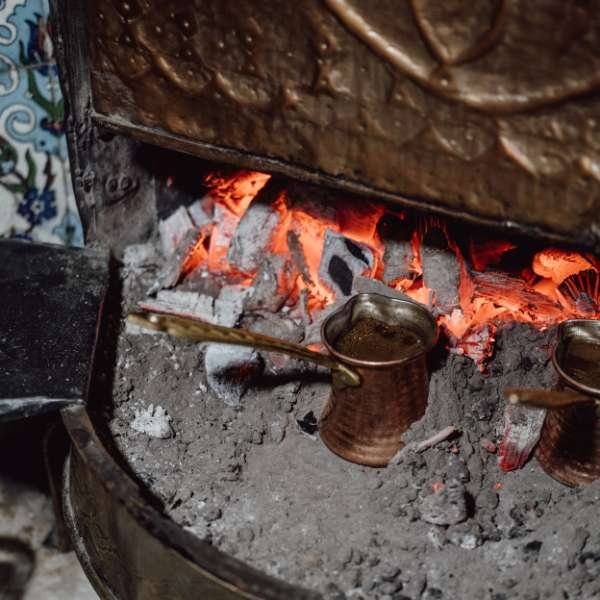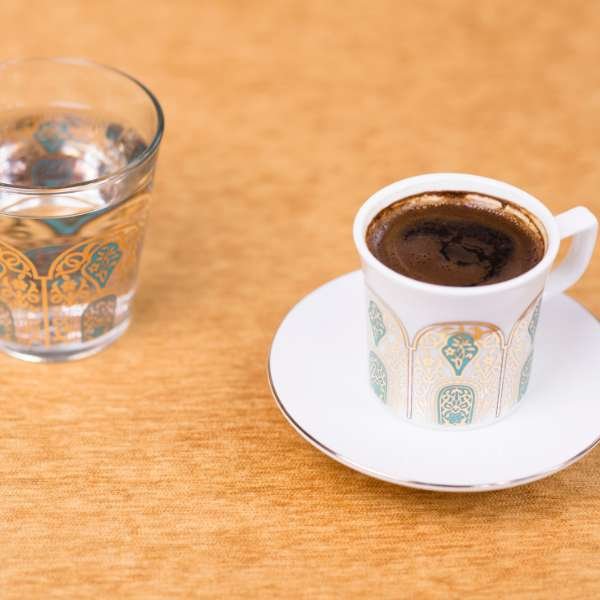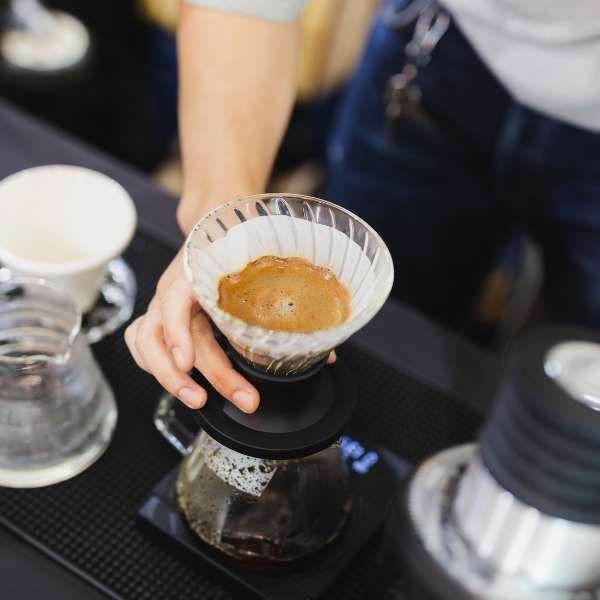Turkish coffee is known for its rich flavor and unique preparation method, traditionally made using an ibrik (a small coffee pot). However, not everyone has access to an ibrik, or perhaps you want to make Turkish coffee without an ibrik for convenience. In this manual, we’re going to discover how to make Turkish coffee without an ibrik, ensuring you still get that proper, sturdy, and fragrant cup of brew. Whether you’re a coffee enthusiast or new to Istanbul-style coffee, you can easily recreate the traditional taste using alternative methods with the right ingredients and techniques. Let’s dive into the steps and tips for making Istanbul-style espresso without an ibrik!
What Makes Turkish Coffee Extraordinary?

Turkish coffee is wonderful for its wealthy history, precise brewing method, and cultural significance. Made with finely floor espresso, cold water, and sugar, it’s far slowly simmered in a cezve, growing a thick, velvety texture. The ritual of serving it in small cups, observed by means of water and Turkish delight, symbolizes hospitality and social connection. Additionally, the culture of fortune-telling from the espresso grounds provides a paranormal detail, making Turkish coffee a definitely special revel in.
Why Authenticity Matters in Turkish Coffee Preparation

Authenticity in Turkish coffee guidance is vital because it honors centuries-old traditions and preserves the rich cultural history tied to this specific drink. The authenticity of Turkish espresso is reflected now not handiest in the particular strategies of grinding, brewing, and serving but additionally inside the values it upholds—patience, precision, and respect for ritual. Using the right type of espresso beans, grinding them to an ultra-pleasant powder, and brewing the espresso slowly over low warmness are important steps that result in the wonderful thick and foamy texture. When prepared authentically, Turkish espresso offers an revel in this is about more than simply flavor; it’s far a connection to a history of expertise, hospitality, and storytelling. By keeping those traditions, Istanbul-style espresso stays a image of cultural identification, bringing human beings together and celebrating the art work of sharing a second of heat and connection.
Why You Don’t Need an Ibrik

For many, the ibrik is synonymous with Istanbul-style espresso. It’s the iconic tool, the keeper of authenticity. But what if we told you that you could craft a cup just as rich and flavorful without it? Yes, it’s true. By understanding the core principles of Turkish coffee—precise grind, water-to-espresso ratio, and slow, gentle heating—you can replicate the brewing process with various other tools. The absence of an ibrik does not rob you of the magic; rather, it offers you the freedom to experiment with your own kitchen tools, and in doing so, recreate the essence of this ancient brew.
Traditional vs. Modern Methods: A Clash of Styles

Traditional brewing techniques call for an ibrik, that iconic small pot that presents you general control over the brewing system. It’s an art shape in itself. Modern alternatives, although now not pretty as nostalgic, can offer a comparable, if no longer equal, end result using commonplace kitchenware like small pots or saucepans. While those techniques may additionally lack the ancient appeal of the ibrik, they’re no less effective in turning in a brew that’s wealthy, full-bodied, and highly Turkish. By experimenting with both the traditional and the cutting-edge, you could tailor the brewing system in your possibilities while retaining the real flavors of Turkish coffee.
The Perks of Brewing Turkish Coffee Without an Ibrik

Brewing Turkish espresso with out an ibrik offers a stunning array of blessings. First, it frees you from the limitations of specialized gadget. Most kitchens already house a suitable pot for this assignment, making it a price-powerful alternative to buying an ibrik. Secondly, with fewer boundaries, you can brew Istanbul-style coffee more frequently, honing your competencies and adjusting the flavors to fit your private taste. This method also serves as a exquisite advent for inexperienced persons to Istanbul-style coffee, letting them explore the rich lifestyle with out the want for fast investment in an ibrik.
Essential Ingredients
To brew an fantastic cup of Turkish espresso, all of it starts with the elements. Though simple, they’re critical to attaining the ideal result. Here’s what you’ll want:
Choosing the Right Coffee Beans

The basis of any awesome cup of Turkish espresso lies inside the beans. You want finely ground coffee, so first-rate that it resembles powdered sugar. Arabica beans are a famous desire for his or her smooth, wealthy taste, although experience free to test with blends or beans from various areas. Freshness is prime—freshly ground espresso will continually provide a superior flavor. If you may keep away from pre-ground espresso, achieve this.
Sugar

You’re wondering how to make coffee sweet, the simplest solution is adding sugar.The right amount of sugar can balance the bitterness of coffee, enhancing its flavor. Start by adding a teaspoon of sugar to your brewed coffee, then adjust to your personal preference. For an extra easy flavor, keep in mind experimenting with exclusive sorts of sugar, like brown sugar or honey, which bring specific flavors . You also can strive flavored syrups, which includes vanilla or caramel, for a greater indulgent deal with. When it comes to how to make coffee sweet, remember that the key is moderation. Too much sugar can overpower the coffee’s natural taste, so start with small amounts and taste as you go.With the right sugar choice, you can easily create a cup of coffee that’s perfectly sweetened to suit your taste buds.
Water Quality: A Crucial Ingredient

The importance of water quality cannot be overstated when making Turkish espresso. Soft, filtered water is considered ideal, as it helps prevent any off-flavors from compromising the brew. The purity of the water directly influences the coffee’s taste, and since Istanbul-style espresso is highly concentrated, even the slightest impurities can impact its rich flavor. For a truly exceptional cup, always use the best water available.
Tools You Can Use to Brew Turkish Coffee Without an Ibrik
While the ibrik is the traditional choice, you don’t need one to brew Turkish espresso. Here are some alternatives:
Using a Small Pot or Saucepan

A small, heavy-bottomed pot or saucepan works wonderfully in place of an ibrik. Its structure ensures even heating, preventing the coffee from burning. Look for a pot with a shape that allows the brew to foam gently—similar to how it would in an ibrik.
Coffee Cups

Turkish espresso is served in small, elegant cups, typically demitasse-sized (2 to 3 ounces). The size is essential, as it allows the coffee to retain its heat and intensifies the experience of drinking it.
Alternative Brewing Methods

Although the ibrik is the gold standard, you can achieve similar results with a French press or even an espresso maker. While these methods may not perfectly mimic the slow brewing of an ibrik, they do create a concentrated brew with rich, robust flavor. Experimenting with these tools allows you to adapt the process to your kitchen while still capturing the spirit of Turkish espresso.
Step-by-Step Guide to Brewing Turkish Coffee Without an Ibrik
The right ingredients and tools are gathered, let’s dive into the brewing process.
Preparing Your Coffee Grounds

Grind your espresso to a very fine consistency—almost like powdered sugar. This grind is essential for the characteristic texture and depth of Turkish espresso. The brew is ground too coarsely, the brew will lack the intensity and richness that makes Istanbul-style coffee so special.
The Perfect Coffee-to-Water Ratio

For an authentic cup, use about one heaping teaspoon of coffee per ounce of water. This ratio can be adjusted depending on how strong you like your espresso. More brew will yield a thicker, richer brew.
Dissolving the Sugar

Add your sugar to the pot along with the espresso and water. Stir thoroughly to ensure that the sugar dissolves completely before the coffee begins to heat. Once the espresso starts warming, avoid stirring to preserve the foam.
Slow Heating: The Secret to Turkish Coffee

Place the pot over low heat and allow the espresso to slowly come to a near-boil. The entire process should take about 5 to 7 minutes. Be vigilant, as the coffee should not boil rapidly. The key is a slow, controlled simmer that allows the brew to develop its distinctive foam.
Brewing Your Coffee Over Low Heat

Simmering is essential for Istanbul-style coffee. It’s a slow process that allows the espresso to develop its signature flavor and texture while creating the coveted foam.
Foam Watch: A Sign of Perfection

As the coffee heats, foam will form. This foam is one of the defining features of Turkish espresso. Just before the foam overflows, remove the pot from the heat for a moment, allowing it to settle. Repeat this a few times to achieve the perfect foam.
Stir Gently: Preserve the Foam

Once your espresso is brewed, resist the urge to stir too much. Gentle swirling is fine, but aggressive stirring will disturb the foam. The foam is vital to the texture of Istanbul-style coffee, and preserving it ensures that you enjoy the full experience.
Conclusion
Brewing Istanbul-style coffee is a ritual, one that requires patience, attention, and an understanding of the subtle intricacies that make it so special. Whether using an ibrik or an alternative method, the principles of great Turkish espresso remain the same. With the right ingredients, tools, and techniques, you can enjoy a rich, flavorful cup that connects you to a tradition centuries old. So, take your time, savor each step, and enjoy the magic of Istanbul-style coffee in all its glory—no ibrik required.

